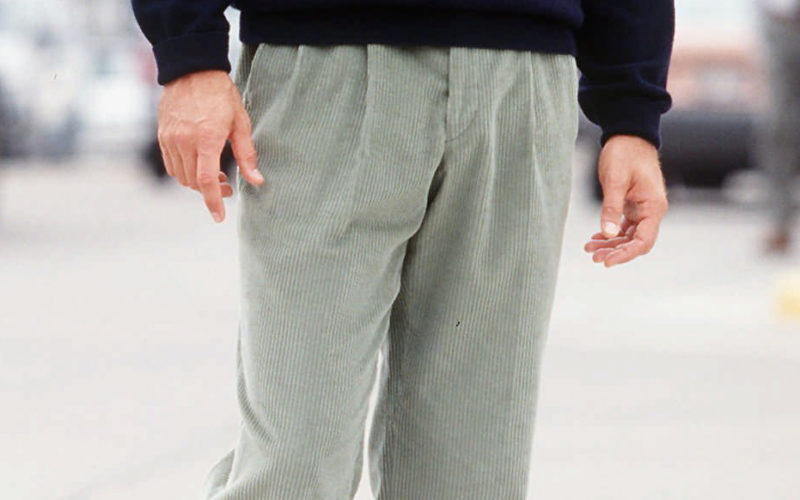Q. My wife and I were just on vacation in Santa Fe for their 100th Annual Indian Market and were lucky enough to get tickets to a Fashion Show. Like the fashion shows you always describe, there were a lot of ridiculous elements, but you also say they relate to upcoming trends. One thing stood out. There were a lot of male models wearing pants with pleats. They were (of course) in good shape, so the pleats weren’t about disguising weight. Is this style returning?
A. Yes, as a matter of fact, it is. Especially in the upscale men’s clothing market. As an example, Paul Stuart’s fashion-forward Phineas Cole line has introduced what it calls a new “fashion pleat.” It is a single, small inverted pleat on a slim-cut trouser, rather than the old double pleats that face out on full-cut trousers. What you saw in what sounds like a fun show can definitely be applied to your own clothing
Today’s take on pleated pants has little resemblance to the pants men wore in the 80’s. Back then, pleats were popular as middle-manager garb. By the mid-90’s, flat-front trousers became the norm. Then, in the early 2000’s, the new skinny-fit look championed by the super-forward designer, Thom Browne, ended the acceptability of pleats. They were relegated to granddad fashion. For well over a decade, no man of style would wear them. But starting around the end of 2016, some older styles began to appear on the scene. If you’re thinking about buying a pair of modern pleated trousers, here’s what you should know.
Pleats were added initially as a practical feature meant to improve comfort around the hip/seat area. Also, they should flatter the body by hitting at the natural waist, offering extra room around the seat, and tapering to the ankle while flat-front trousers, especially for men with more muscular thighs, may show signs of straining and may have a less put-together look. In any case, there is not just one type of pleats; the two basic styles are:
- “forward” or “inverted” pleats point toward the zipper and appear neater. They make you look slimmer and younger. You’ll find them more frequently in English tailoring.
- “reverse pleats” face outward toward the pockets. These are more common in casual garments. With a looser, more relaxed fit, they are associated with Italian tailoring.
In both cases, pleats are simply a fold of fabric on the front of the trousers. Older garments tended to have double pleats, while the new single-pleats let you move subtly into a revived modern look.
When shopping for pleated trousers, here are some elements to keep in mind. They should look classic and uncluttered. Match them with a simple tee, a polo, or a trim button-front shirt – no wide-cut, baggy silhouettes – and always tuck in your shirt. Otherwise, the extra fabric over the top of another garment causes your midsection to balloon out. On this last point, fit pulls today’s trousers out of old-fashioned territory. Keep in mind that they may fall higher than you are used to. The legs should not bag around your shoes.
A note of caution: because of the extra fabric around the seat, pleats may make shorter or stocky men appear boxier. Regardless of height, realize that too much material around your hips emphasizes the seat area. The pleats themselves should lie flat when you’re standing up. They should not pull or show straining as they would when the garment is too tight around the hips.
Even among men who are generally happy with flat-front trousers, more guys have been asking for the new pleats. They just want some variety.
Please send your men’s dress and grooming questions to MALE CALL: Lois.Fenton@prodigy.net









